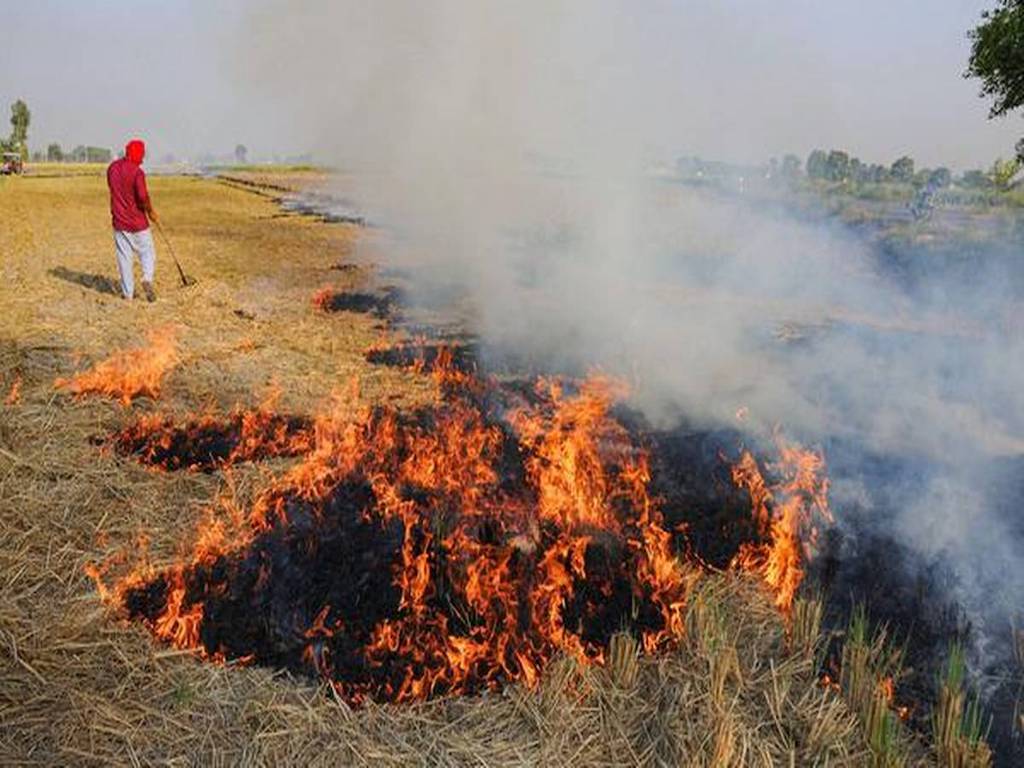
According to officials, Delhi's air quality fell to the "poor" category as of Wednesday, as the number of stubble-burning events increased.
The national capital's Air Quality Index (AQI) was measured at 222 by the Ministry of Earth Sciences' forecasting agency SAFAR, and it is projected to worsen over the following two days due to an expected increase in the number of stubble-burning occurrences.
"Delhi's air quality index is bad. The percentage of PM2.5 attributed to fires is 12%. Because the winds at the transport level are from the northwest, fire emissions from upwind regions increase PM2.5 concentration.
"If there is no rain in the next two days, the share of stubble burning is expected to grow. For the following three days, the total AQI is expected to decline to the higher end of the bad category," it added.
Stubble Burning is the Reason Behind Delhi’s Pollution
According to the Indian Agricultural Research Institute (IARI), 969 agricultural fires were reported throughout the six states, with Punjab accounting for 788, Haryana for 155, Uttar Pradesh for 1, Rajasthan for 4, and Madhya Pradesh for 21. In Delhi, no fires were reported.
On October 19, 562 agricultural fires were reported throughout the 6 states, with Punjab accounting for 496, Haryana for 55, Uttar Pradesh and Rajasthan for 5 each, and Madhya Pradesh for 1. In Delhi, no fires were reported.
A total of 60 agricultural fires were reported in the 6 states the day before, with Punjab accounting for 57, Haryana for 1, and Rajasthan for 2. In Delhi, Uttar Pradesh, and MP, there were no fires.
Clouds over eastern Uttar Pradesh and MP, according to the IARI, made satellite identification of burning events difficult.
Between September 1 and October 19, a total of 4,768 burning incidents were recorded in the six states, with 2,942, 1,082, 625, 0, 34, and 85 in Punjab, Haryana, Uttar Pradesh, Delhi, Rajasthan, and Madhya Pradesh, respectively.
Altogether, there have been 56.7 % fewer fires in the 6 states this year than there were in 2020. In the current season, compared to 2020, Punjab saw a 65.4 % drop, Haryana saw a 6.9 % reduction, Uttar Pradesh saw a 25.5 % increase, Delhi saw a 100 % reduction, Rajasthan saw an 88.8% reduction, and Madhya Pradesh saw an 83.7 % reduction.
Intermittent rain in north India had substantially reduced pollution in the national capital on Tuesday, with the air quality index (AQI) in the "excellent" category at 82. Stubble burning in neighbouring states adds considerably to Delhi's air pollution.
Following the new "Standard Protocol for Estimation of Crop Residue Burning Fire Events Using Satellite Data," active fire events caused by rice residue burning were tracked using satellite remote sensing.
During the paddy harvesting season in October and November, Punjab and Haryana get a lot of attention.
Farmers set fire to their fields to remove crop leftovers fast before planting wheat and potatoes. It's one of the primary causes of Delhi-worrying NCR's increase in pollution.
















